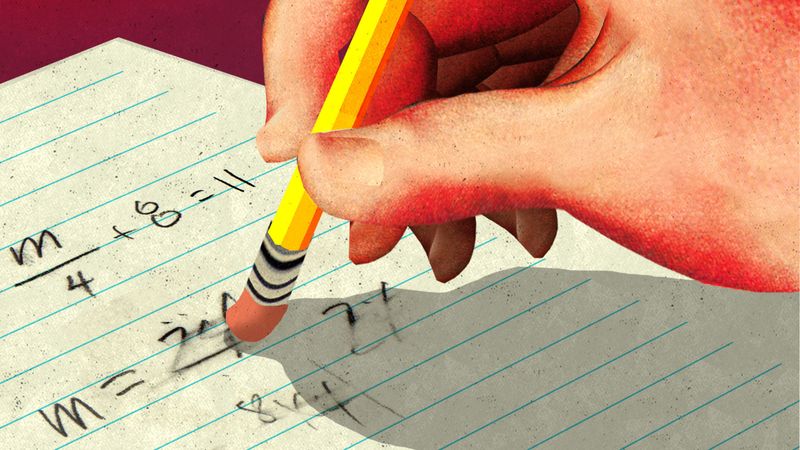In the bustling hallways and vibrant classrooms of schools, teachers often encounter subtle cues that reveal more than words ever could. These indicators can hint at underlying issues in child-parent dynamics that might affect a child’s learning and development.
While every family has its unique story, some behaviors consistently stand out as potential red flags. Teachers, with their keen observation skills, are often the first to notice these signs during initial meetings with parents and children.
This blog delves into 15 such red flags, shedding light on what they might signify and why they matter in the context of education and child development.
1. A child apologizing constantly for small things
When a child apologizes excessively for trivial matters, it signals an intense fear of disapproval or making mistakes. Imagine a young student, eyes wide with anxiety, saying sorry for accidentally dropping a pencil or speaking out of turn. Such behavior may stem from an environment where mistakes are harshly criticized, rather than constructively addressed.
Teachers view this as a significant indicator of a child’s emotional well-being. It often reflects a home atmosphere where perfection is expected and errors are not tolerated. The constant apologies might also suggest a lack of confidence, affecting a child’s ability to participate fully in class activities.
By fostering a supportive classroom environment, teachers aim to build the student’s confidence, encouraging them to embrace learning, mistakes and all.
2. Parents speaking over or for their child every time
When parents consistently talk over their children, it may indicate a lack of confidence in their child’s ability to express themselves. Picture a parent answering every question meant for the child, leaving the young one nodding silently. This behavior not only stifles a child’s voice but also suggests a dynamic where the child’s opinions are undervalued.
Teachers notice this as a potential red flag about the child’s development of autonomy and self-expression. It might reflect an overprotective or controlling parenting style, limiting the child’s opportunity to learn decision-making or social skills.
Educators strive to create spaces where children feel heard and valued, encouraging parents to allow their children to communicate their thoughts and feelings freely.
3. The student shows signs of fear around making mistakes
Fear of making mistakes in children can be crippling, impacting their willingness to engage in new experiences. A student who hesitates before answering even when they know the correct response may be exhibiting such fear. Teachers see this as a red flag, often indicating an environment where errors are met with impatience or disappointment.
This behavior can hamper a child’s educational journey, where trial and error is a vital part of learning. It suggests a lack of emotional safety, where mistakes are not seen as learning opportunities.
Educators work to create a classroom ethos that celebrates effort and progress, not just perfection, encouraging students to participate without the fear of judgment. They stress the importance of resilience and growth from setbacks.
4. Parents dismiss the teacher’s input completely
When parents disregard a teacher’s insights or advice, it raises concerns about the partnership necessary for a child’s education. Imagine a parent who, during a conference, dismisses the teacher’s feedback with a wave or an eye roll. Such behavior often signifies an unwillingness to collaborate, which might affect the child’s academic and social development.
This attitude can suggest a lack of respect for the educational process or a belief that they know better without considering professional insights. It may hinder the teacher’s ability to assist the child effectively.
Teachers aim to build collaborative relationships with parents, emphasizing that education is a team effort. They encourage open dialogues to address concerns and work towards shared goals.
5. Over-explaining every part of the child’s personality
Parents who feel compelled to over-explain their child’s behaviors and traits often reveal more than they intend. Consider a scenario where a parent spends significant time justifying their child’s every action. This might indicate an underlying anxiety about how the child is perceived or a feeling of needing validation for their parenting decisions.
For teachers, this can be a red flag about the pressures the child might face at home. It suggests that the child is possibly burdened by expectations that are too high or unrealistic.
Educators prefer to observe and understand students within the classroom context, encouraging parents to trust that teachers will appreciate each child’s unique qualities without exhaustive explanations. They focus on supporting the child’s natural development.
6. Minimizing a child’s emotions in front of them
When parents downplay their child’s emotions in public, it sends a powerful message of invalidation. Picture a child expressing distress, only to be told by a parent, “You’re overreacting.” Such responses can teach children to doubt their feelings, leading to long-term impacts on their emotional health.
Teachers observe this behavior as a red flag indicating a lack of emotional support. It might suggest that the child is being taught to suppress their emotions, which can affect their ability to handle emotional challenges.
In the classroom, teachers strive to validate students’ feelings and offer a safe space for expression. They understand the importance of emotional literacy and work to foster an environment where all emotions are respected and addressed.
7. Constant reminders that “they’re not like other kids”
Parents who frequently emphasize how different their child is might be trying to protect them, but it can have unintended consequences. Imagine a parent constantly highlighting their child’s uniqueness, making the child feel isolated rather than special. This behavior can lead to social challenges or self-esteem issues.
Teachers often see this as a red flag, as it might suggest that the child feels separated from their peers, impacting their social interactions. It can also create pressure to live up to an identity that might not fully align with the child’s self-perception.
Educators focus on inclusivity, encouraging children to embrace their individuality while feeling a sense of belonging within the classroom community.
8. Referring to the child as “difficult” right away
When parents immediately describe their child as “difficult,” it sets a concerning tone. Consider a scenario where a parent, with a sigh, introduces their child to a teacher with this label. It can suggest an adversarial relationship with the child or frustration with unmet expectations.
Such labeling can impact how the child views themselves, potentially leading to internalized negative self-perceptions. Teachers see this as a red flag, indicating possible challenges at home that affect the child’s behavior and self-esteem.
Educators strive to see beyond labels, focusing instead on understanding each child’s individual needs and strengths. They aim to create a supportive environment that nurtures positive self-identity and growth.
9. Extreme pressure to perform academically or socially
When a child is under relentless pressure to excel, it often manifests as stress and anxiety. Picture a child sitting tensely while a parent discusses their academic performance with unyielding intensity. This scenario points to an environment where achievements are prioritized above well-being.
Teachers recognize this red flag as indicative of unrealistic expectations that can lead to burnout and a diminished love of learning. It suggests a focus on outcomes rather than the process of learning and growth.
In response, educators emphasize the importance of balance, celebrating effort and progress. They encourage parents to appreciate the learning journey and support their child’s overall development, not just academic success.
10. Talking about the child instead of with them
When conversations about a child occur without their involvement, it can feel alienating. Imagine a parent discussing their child’s issues in the third person during a meeting, leaving the child as a passive observer. This approach often suggests a lack of engagement with the child’s perspective.
Teachers see this as a red flag, indicating a possible disconnect between parent and child. It might suggest that the child feels unimportant in discussions about their own life.
Educators advocate for inclusive conversations that involve the child, respecting their voice and experiences. They believe that children can contribute valuable insights into their own needs and challenges, enhancing mutual understanding and support.
11. Parent blaming other kids for everything
When parents habitually blame others for their child’s challenges, it reflects a reluctance to address underlying issues. Picture a parent quick to point fingers at other students when discussing their child’s difficulties. This behavior can prevent constructive solutions and personal growth.
Teachers notice this as a red flag, suggesting that the child might not be learning accountability or problem-solving skills. It often implies a defensive stance that overlooks the child’s role in their own experiences.
Educators focus on encouraging personal responsibility and resilience, guiding students to navigate social dynamics and challenges. They work with parents to foster environments where accountability is valued and learning from experiences is encouraged.
12. Refusal to acknowledge behavioral concerns
When parents refuse to recognize behavioral issues, it can hinder a child’s development and support. Imagine a teacher expressing concerns, only to have them brushed aside by a parent. This denial can prevent necessary interventions that help the child thrive.
Teachers identify this as a red flag, suggesting a possible lack of awareness or unwillingness to address difficulties. It might indicate that the child is not receiving the guidance they need to navigate behavioral challenges effectively.
Educators aim to collaborate with parents to develop strategies that support positive behavior and growth, emphasizing open communication and shared responsibility in addressing concerns.
13. No boundaries between parent and child roles
Blurred boundaries between parent and child roles can lead to confusion and insecurity. Consider a parent who treats their child as an equal or confidant, sharing inappropriate details during a conversation with a teacher. This behavior can undermine the child’s sense of stability and authority.
Teachers view this as a red flag, suggesting that the child might struggle with understanding appropriate roles and responsibilities. It can affect the child’s relationships and sense of security.
Educators work to reinforce healthy boundaries, encouraging parents to maintain the parental role while respecting their child’s individuality. They focus on fostering environments where children feel safe and supported.
14. Child shows anxiety about being picked up late—or not at all
A child’s anxiety about being left or picked up late indicates feelings of insecurity and fear of abandonment. Imagine a young student nervously watching the clock, worried about who will come for them. Such anxiety can reveal inconsistencies in parental reliability or communication.
Teachers see this as a red flag about the child’s emotional and security needs. It suggests that the child may not feel assured of their safety and well-being, affecting their concentration and comfort at school.
In response, educators strive to provide reassurance and support, working with parents to ensure consistent routines and communication. They emphasize the importance of reliability and trust in fostering a child’s sense of security.
15. Parent acts defensive before any concern is raised
Parents who approach meetings with a defensive attitude may inadvertently signal underlying issues. Picture a parent tense and guarded before the teacher has even expressed any concerns. This defensiveness can suggest sensitivity to criticism or previous negative experiences.
Teachers recognize this red flag as potentially indicative of strained home dynamics or a lack of trust in educational professionals. It can hinder open communication and collaborative problem-solving.
Educators strive to create a welcoming atmosphere, encouraging trust and partnership. They emphasize that discussions are meant to support and benefit the child’s development, inviting parents to engage constructively and openly.
















